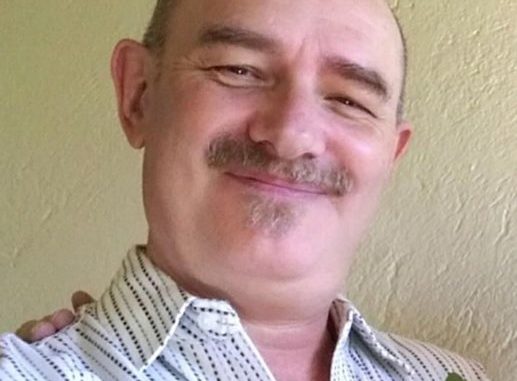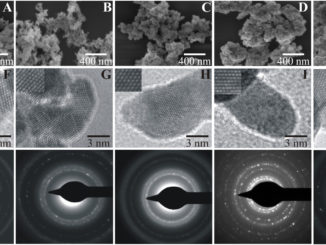
Scientifc outline of Claudio Zicovich‑Wilson
Claudio was always interested in chemistry. He was only 13 years old when, he and a close friend, mounted a chemistry laboratory in the washing room of the latter. They performed experiments with several compounds, metal oxides, bases, acids, Bunsen burners, using chemistry books as guides to their investigations.
Claudio also developed a strong interest in music, and he learned to play the guitar. He was only 14 when started to compose and to play with some other friends.
In 1975 he enrolled in the Chemistry Program at the University of Buenos Aires. Those were very difficult times in Argentina due to the military dictatorship that ruled the country. Claudio was always ready to participate in musical or poetic events.
He was very interested and intensely studied linguistics, poetry, music, semiotics and pre-Socratic greek philosophy. He was particularly struck by the deep philosophical ideas of the I-Ching and the Tao-te-King. The discovery of Eastern philosophy, along with the practice of Qi Kung and Aikido, had deep implications for the rest of his life and his very generous stance toward fellow humans.
In mid-1979 Claudio left Argentina to spend a year visiting friends in Europe. He arrived in Madrid and then headed to Barcelona, where he met his wife-to-be, Lourdes. The first thing he did was to buy a good classical guitar from Valencia. He traveled through France, England, Italy and Holland, always going back to Barcelona between trips. He survived this period by delivering publicity and playing guitar in public places, metro stations or small cafés. He went back to Buenos Aires to finish his University studies by July 1980, with a longer hair, a good guitar and many more friends. He devoted his life to chemistry and music.
In 1982 Lourdes went to Buenos Aires and they got married in 1983. Their only son, Miguel, was born in 1984. In 1985 the family moved to Valencia, Spain.
From 1985 until 1994, with a family to feed, without a scholarship or stable income source, Claudio followed chemistry studies at the Universidad de Valencia, where he obtained his Ph.D. degree under the supervision of Avelino Corma and Pedro Viruela (thesis title: covalent interactions in reactions catalyzed by acidic zeolites). In 1994 he became a postdoctoral student working in catalysis problems at the Instituto de Tecnologías Químicas of the CSIC-Universidad Politécnica de Valencia (ITQ-UPV).
During that period, Claudio was part of two musical groups: AIMURAY, mainly playing andean music and a few own compositions, and later with the TENTENELAIRE group, playing many more original fusion compositions. He was also a founder member of the pottery workshop ARTANA.
From 1995 to 1997 he was a postdoctoral fellow at the Chemistry Department, Universitá di Torino, Italy. Roberto Dovesi met him in 1994, when he was invited by Avelino Corma to visit his group in Valencia. The main reason for the visit was Claudio’s interest to be involved in a more fundamental theoretical work, as in Valencia his role was essentially to support the experimental activity of the group, one of the world leader Institutions in catalysis.
When Claudio arrived in Torino, Roberto proposed him a series of possible research investigations, spanning from formalisms the Torino group was trying to implement in CRYSTAL, to applications in catalysis, along the lines of his previous activity. On top of the list, in terms of difficulty, was the implementation of the SACO (Symmetry Adapted Crystalline Orbitals) representation in the CRYSTAL code. This was an idea that Roberto had in mind for a long time, but that had never been implemented in periodic codes. At that time, and for many years since then, the equivalent SAMO (Symmetry Adapted Molecular Orbitals) were implemented in molecular codes just for abelian groups (with no degeneracies). The advantages of SACO’s are evident: the Fock matrix to be diagonalized becomes block diagonal according to the various Irreducible Representations (IR) of the group and the factorization extends also to the different rows of the IR.
He accepted immediately the most challenging task. Roberto was worried about the difficulties, as the documentation on the matter was scarce and very “mathematical.” So he was not sure that they (actually Claudio) could get at the end of the project: every day Roberto was entering in his office, trying to discuss with him the various aspects, and implicitly trying to understand if he was solid enough to win this very hard battle. But after a week, Claudio asked Roberto to leave him alone with the problem: “please, do no ask me; when the problem will be solved, I will inform you and provide you the solution.” And this is what happened: after 6 months he found the way to solve the problem of generating the SACOs for any Space Group, without any additional information other than the operators of the group. This leads to two publications [115,116] and to the implementation of SACOs in the CRYSTAL code that remains a unique, not only in periodic codes, but also in the molecular context, as documented by two papers published about 16 years later [22,23], showing that, using SACO’s, it has been possible to investigate fullerenes much larger than the ones previously investigated with molecular codes: icosahedral fullerenes up to (10,10), that contain 6000 atoms; in spite of the dimension of the basis set (84.000 functions), the full SCF has been performed in 24 h on a single core; the reason being that the size of the largest matrix to be diagonalized drops down to 3600 and that along the calculation all linear algebra is performed in the SACO basis rather than in the AO basis (in this last part of the work, Roberto Orlando and Marco De La Pierre have been involved).
From these years, and until his sudden and unexpected death, Claudio became a constant and very bright collaborator of the CRYSTAL project. Fully devoted to the project, he was visiting Torino at least once a year (for a month or more) attending to most of the CRYSTAL schools, helping Ph.D. and undergraduate students in solving problems, being very precious in debugging the code.
During the last 20 years, he contributed to many other new features of the CRYSTAL code. In 1996 he visited Daresbury, and with Vic Saunders (another of the major contributors to the code) he implemented a scheme for the generation of Wannier functions from the Crystalline Orbitals in the basis of the Bloch functions. The scheme was published only 4 years later [107], because both Claudio and Vic were very often trapped solving “the next” problem, and not very attracted by the idea of describing what was already working properly. From 2004, starting from the analytical gradient implemented by Klaus Doll in Daresbury under the supervision of Vic Saunders and a crude version of the optimizer for both cartesian coordinates and unit cell parameters, proposed by Philippe D’Arco, Claudio implemented a solid, versatile, robust, accurate tool for the optimization of structures, that remains effective also when applied to very large unit cell systems, as it has been the case of bulk Crambin, or huge fullerenes [23]. The list of Claudio’s crucial contributions could continue, including the IR intensities evaluated from the Wannier functions, a sophisticated scheme for the determination of Transition States [47], and a scheme for the evaluation the Hirshfeld charges for periodic systems [11]. Claudio (with Fabien Pascale) implemented most of the routines for the calculation of the vibrational frequencies [95], and many options related to their analysis, including the correspondence between LO and TO modes, the automatic symmetry classification of the modes on the basis of the IR of the space group. Claudio has been one of the main authors of 5 major releases of the program (CRYSTAL98, 03, 06, 09 and 14) and a lecturer to most of the CRYSTAL-based summer schools that have been held in the last 20 years in Italy, Spain, USA, Germany, UK, France, México, Argentina, Cuba and Brazil. He authored several book chapters and 136 papers published in international journals with over 9500 citations.
He spent several short research periods in many places, such as the Universidad Jaume I in Castellón (Spain), Dirección de Cómputo Académico at the Universidad Nacional Autónoma de México, Laboratoire de Physique Quantique (LPQ) at the Université de Toulouse, le Departement de Géologie de l’École Nationale Supérieure in Paris, the Institut Charles Gerhardt, Montpellier, and the Computational Science Department at CCLRC- Daresbury Laboratory in the UK. The themes he worked on ranged from extremely theoretical (the development of a Difference-Dedicated Configuration Interaction scheme for a multiconfigurational reference wavefunction in LPQ in Toulouse under Jean-Pierre Daudey) to specifically applied practical problems (the study of molecular interactions in crucial geologic compounds and volcanic chemical reactions) in ENS-Paris and UNAM-México.
In 1998 he went back to Valencia and worked in catalytic materials and reactions as Associate Researcher at the ITQ-UPV until 2001, when, invited by Alejandro Ramírez-Solís, he took a full Professor position at the Physics Department, Facultad de Ciencias, Universidad Autónoma del Estado de Morelos in Cuernavaca, México. In the last decade, he tackled with Alejandro fundamental problems in metal-doped organic polymers and the complex electronic structure problem posed by the high-pressure ε and ζ phases of solid oxygen; in the latter case, they were able to show that the previous failures of GGA-DFT to deal with structural, vibrational and energetic properties were due to the rather strong multi-reference character of the (O2)4 unit cell of these phases and that only hybrid DFT methods can accurately describe them. He stayed as full Professor there until his untimely departure.
Because of his human and empathic character, he has never just been a colleague or collaborator but rather a caring son, brother, uncle, father and friend to many of us during all these years.
He was fundamentally gentle and kind to everyone he met. We will all miss his irony, his Argentinian humor, his colorful shirts and tasteful hats, and the beautiful sound of his guitar.
Author(s): Alejandro Ramírez-Solís; Roberto Dovesi.
Theoretical Chemistry Accounts
DOI: https://doi.org/10.1007/s00214-018-2263-7




